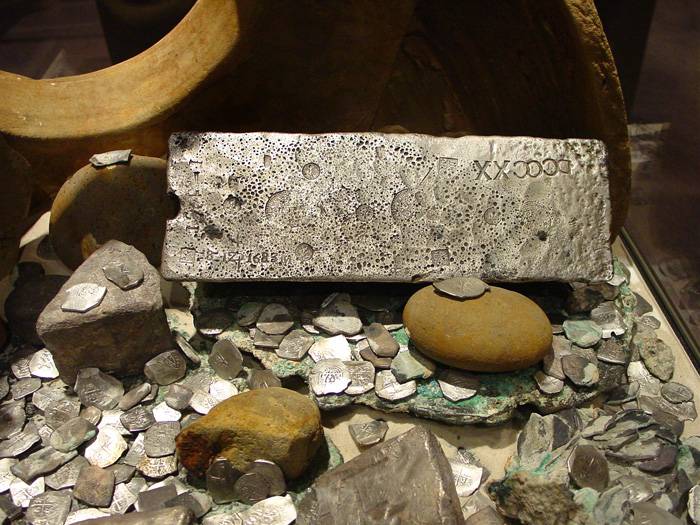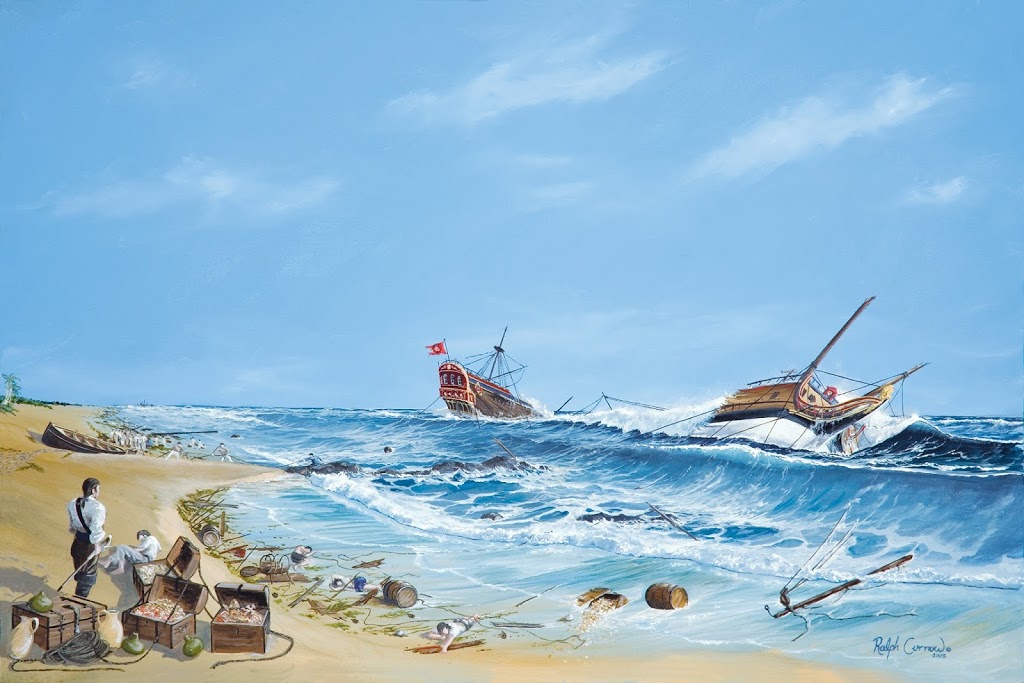Over the last several years, the 1715 Fleet Society and representatives of Florida United Numismatists worked with the State of Florida’s Bureau of Archaeological Research to organize an exhibit featuring the State of Florida’s collection of 1715 Fleet artifacts. The plan was to have the exhibit in the year 2015 which would mark the 300th Anniversary of the loss of the 1715 Fleet.
The culmination of this effort resulted in an exceptional presentation of the State’s collection of 1715 Fleet artifacts at the Florida United Numismatists Show in Orlando, Florida, in January of 2015. The Bureau of Archaeological Research was very eager to present this exhibit as a way of showcasing its collection. As a result of my involvement in this project (as a representative of the 1715 Fleet Society), I was the recipient of many comments from individuals who were under the mistaken belief that the state somehow keeps all its artifacts hidden away and inaccessible to the public. I was surprised at the number of individuals who have this belief. The focus of this article is to dispel that myth once and for all.
On July 31, 1715, 11 Spanish galleons were dashed upon the reefs of eastern Florida, the victim of a violent hurricane. The contents of these treasure laden galleons were spread out over a 40 mile stretch of shoreline from Sebastian to Ft. Pierce. Known as the “Treasure Coast”, this area has been the focus of intense salvage efforts since the early 1960s. While the state of Florida does not actually engage in the search of Fleet related artifacts, they do lease the area to hopeful salvagers. As a result of this arrangement, the state of Florida has received a percentage of salvaged items which forms the basis of its collection.
The Florida Department of State, Division of Historical Resources, is responsible for artifacts collected on state-owned lands. The division’s Archaeological Collection (which includes Fleet related artifacts) is located on the grounds of the Bureau of Archaeological Research’s Mission San Luiis in Tallahassee, Florida. The Bureau is entrusted with the maintenance, preservation and protection of over 12,000 years of Florida heritage. The overall mission of the Division of Historical Resources is to preserve and promote Florida’s historical and archaeological resources.
So, how does the Division of Historical Resources promote the history and archaeology of the 1715 Fleet? I was very surprised to learn that nearly 900 of the state’s 1715 Fleet related artifacts are actually on display at a variety of venues both in and out of the state of Florida. I was totally unaware of this fact and it was contrary to what I believed. Like many, I was under the impression that exhibits featuring 1715 Fleet related artifacts were few and far between. In actuality, nothing could be further from the truth. I requested, and was given, a listing of some (but not all) of the major venues featuring 1715 Fleet artifacts. I wish to share it with you:
- The Elliott Museum, Stuart, Florida
- MOSH, Jacksonville, Florida
- Museum of Florida History, Tallahassee, Florida
- McLarty Treasure Museum, Sebastian, Florida
- Baker Block Museum, Baker, Florida
- John Pennecamp Coral Reef State Park, Key Largo, Florida
- TT Wentworth, Jr., Florida State Museum, Pensacola, Florida
- Jupiter Inlet Lighthouse & Museum, Jupiter, Florida
- St. Augustine Pirate Museum, St. Augustine, Florida
- Government House St. Augustine, St. Augustine, Florida
- St. Lucie County Regional History Center, Ft. Pierce, Florida
- The Osceola County Welcome Center, Kissimmee, Florida
- History Miami Museum, Miami, Florida
- Silver River Museum, Ocala, Florida
- Southwest Florida Museum of History, Ft. Myers, Florida
- Augusta Museum of History, Augusta, Georgia
- Children’s Museum, Indianapolis, Indiana
- and, recently returned after several years on exhibit, the Door County Maritime Museum, Sturgeon Bay, Wisconsin
As we can see from this list, there are many exhibits (large and small) featuring artifacts from the 1715 Fleet.
In this Anniversary year, it might be fun (and educational) to visit some of these venues and learn from each local a little bit of Fleet history. Also, one will be able to appreciate the efforts of those who are custodians of Fleet artifacts to make this material accessible to the public.
Ben Costello, Director, 1715 Fleet Society




